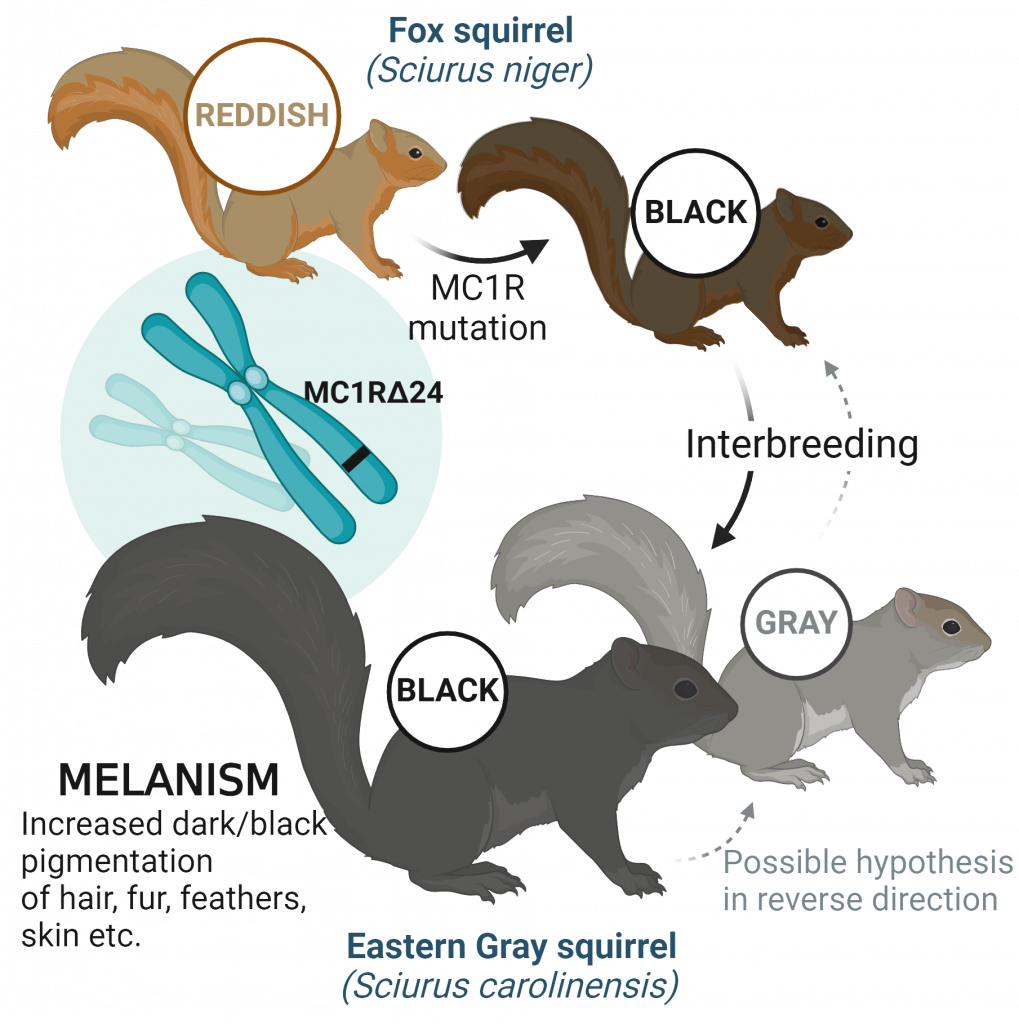Scottie dogs, Tootsie Rolls and Sunflower — what do these things have in common? They are all symbols of The College of Wooster, but there is one missing — black squirrels. Black squirrel habitats are plentiful, with predators being kept at bay thanks to the abundance of students. The black squirrel, however, is not unique to Wooster — it is also the unofficial mascot for Kent State University in Kent, Ohio, which has their own black squirrel statue on campus that students pet for good luck on exams.
According to the website Cleveland.com, about one in every 10,000 squirrels is black this color squirrel typically found in surrounding Michigan and Ontario areas. How did these black squirrels travel specifically to college campuses in Ohio?
In 1961, the head groundskeeper at Kent State, Larry Wooddell, saw his first black squirrel in Chardon, Ohio and was immediately curious. After researching, Wooddell discovered that black squirrels were dying in Ohio due to the abundance of predators. In an attempt to revive Ohio’s black squirrel population, Wooddell initiated six months of negotiations with the Canadian government to bring 10 black squirrels to Kent from Ontario because Wooddell’s friend, “Biff,” saw black squirrels there while on a business trip.
Unfortunately, this kind of species transplant project does not often end in success, since the native species are usually the most adapted to their habitat and outcompete the foreigners. However, the squirrels transplanted to Kent thrived and spread, thanks to the food and shelter boxes that were set up around campus.
As a result, in 1964 there were over 150 black squirrels recorded in the area. Kent’s squirrel welcome program was not the only reason the black squirrel population thrived –– genetics also played a significant role. Black fur in squirrels is the dominant fur characteristic, meaning that if two black squirrels mate, their babies will have black fur. The common grey and fox squirrels can also produce baby black squirrels if the babies are born with some missing DNA, which results in a melanistic condition.
Kent’s squirrels were also able to thrive in the Ohio environment because they were originally quite common in the area before abundant deforestation in the 1500s cleared out masses of trees to make room for human settlements. Before then, the Ohio forests were thick and dark with coniferous tree cover, which gave black squirrels an advantage over lighter colored squirrels when it came to camouflage, resulting in their abundance.
The chillier climate of Michigan, Ohio and Ontario also forced wildlife protection agencies to prioritize temperature regulation — black squirrels absorb more heat in the sunlight than their lighter counterparts during the winter due to their lower albedo/darker color. While there is no hard evidence to conclude that the black squirrels on The College of Wooster campus are descendants of the 10 black squirrels released at Kent State in 1961, there is no doubt that seeing the squirrels reintroduced in Ohio concerned some wildlife biologists who feared the demise of the current native grey and auburn squirrels. According to Kent State’s website, however, it does not appear that the black squirrels have outcompeted the other colored squirrels; the only problem reported due to the large population is occasional damage to the exterior of buildings. The black squirrels have become symbolic mascots for several colleges in Ohio, so thankfully it looks like they will be here to stay for a long time to come.

Photo courtesy of Barbara J. Perenic/Columbus Dispatch

Photo created in BioRender
